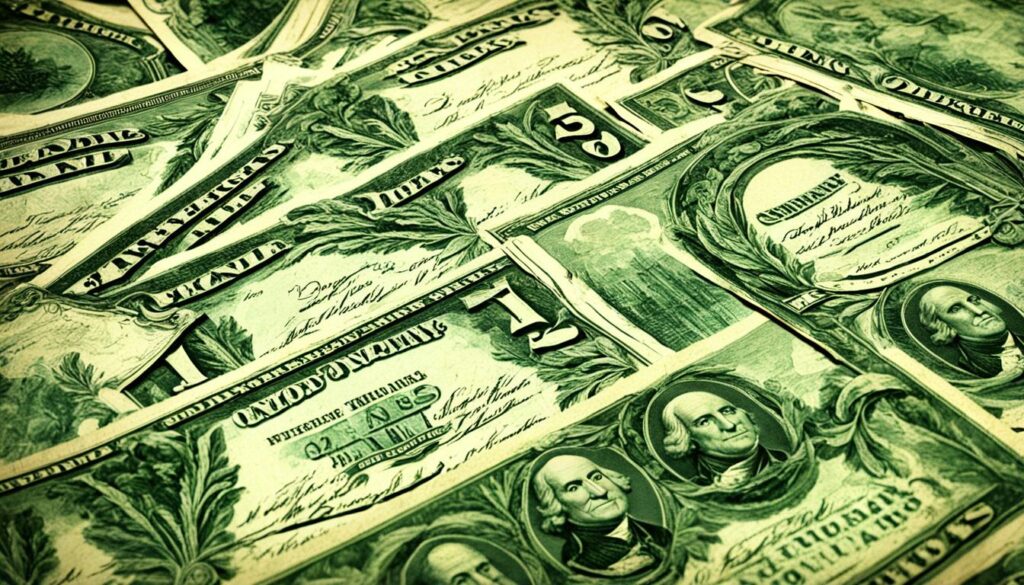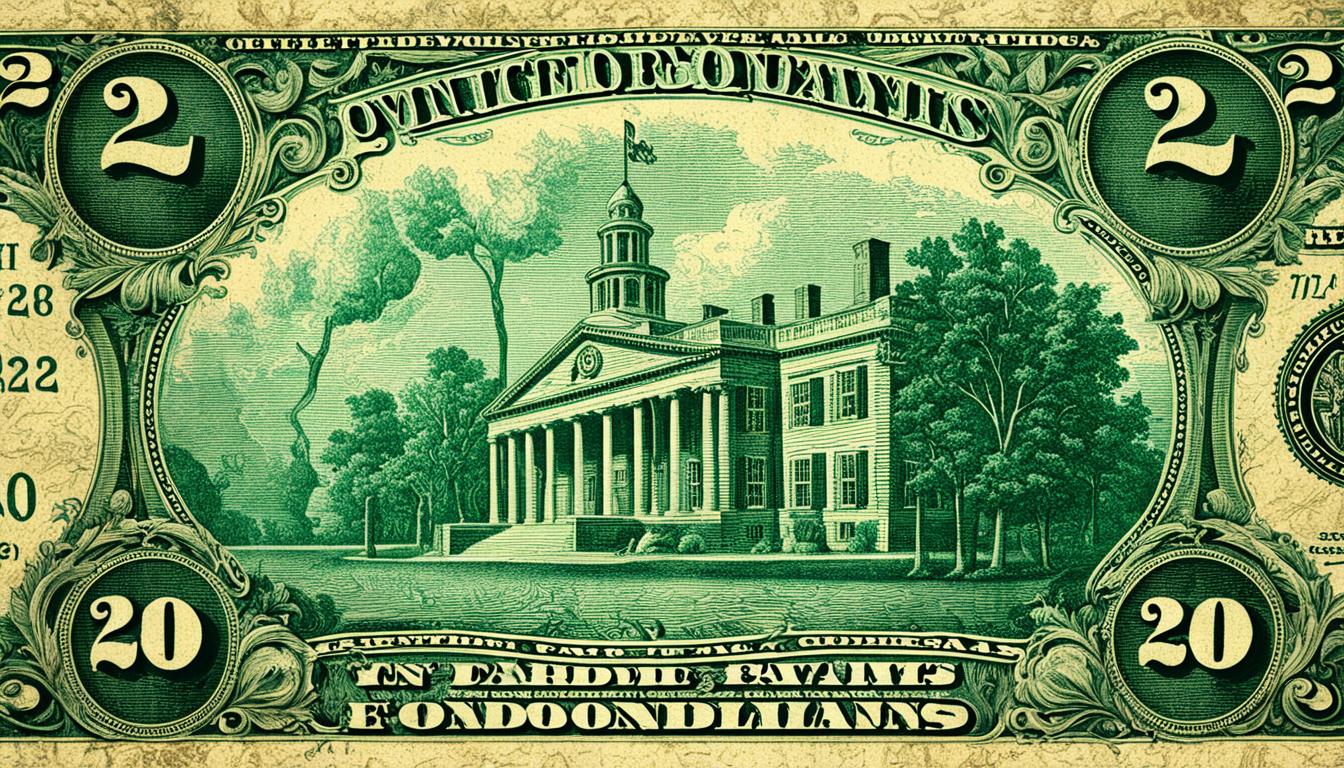Before the United States was a country, early American currency was already being used. In 1690, the Massachusetts Bay Colony issued the first paper money in the Western world. This was to fund a military trip to Canada.
Soon, other colonies started using their own money for different costs. By the time the Revolutionary War started, each of the thirteen colonies had its own currency. This was despite Great Britain’s disapproval.
In 1775, the Continental Congress created Continental Currency. This was the first national paper money in America. But, it quickly lost value because it wasn’t backed by gold or silver.
The British tried to weaken the American economy by stopping rebel money from being used. They even made fake Continental Currency. By 1780, Continental Currency was worth only a tiny fraction of its original value.
Key Takeaways
- The Massachusetts Bay Colony issued the first government-authorized paper money in the Western world in 1690.
- Each of the thirteen colonies had its own currency by the time of the Revolutionary War.
- The Continental Congress introduced Continental Currency in 1775 to fund military expenses.
- The British attempted to undermine the American economy by prohibiting rebel money and counterfeiting.
- By 1780, Continental Currency had devalued to one-fortieth of its original face value.
The Fascinating History of Early American Paper Money
After the Revolutionary War, Americans were wary of paper money because it had lost value quickly and wasn’t backed by anything solid. In 1791, Alexander Hamilton helped create the Bank of the United States. This move was crucial for managing government spending and offering credit, setting the stage for a more stable money system.
During this time, many banks and companies printed their own paper money, called “broken-bank notes.” But, this led to a big problem with fake money, causing trouble for the economy and making people doubt banks.

The Civil War changed the game for money in America. Both the North and South printed their own money during the war. In 1863, the National Banking Act came into effect. It stopped different currencies and set up national banks to keep the economy in check.
Many types of paper money came out back then. There were interest-bearing notes, ones you could trade for gold or silver, and legal tender notes. National bank notes were also around, backed by real assets. Greenbacks, gold certificates, and silver certificates made things even more complicated.
The 1907 financial panic showed how fragile the banking system was. This led to the creation of the Federal Reserve system. Federal Reserve Bank Notes made it through the Great Depression. Other types like silver certificates and United States notes were eventually taken out of use. This made the money system simpler and more controlled.
The Value and Rarity of Modern $2 Bills
Today, $2 bills are still being printed and used. Some modern ones can be quite valuable to collectors. For instance, $2 bills from 2003 with very low serial numbers have sold for thousands of dollars at auctions. One bill was sold for $2,400 and then resold for $4,000. These rare $2 bills are highly wanted by collectors and can command a high price.
Older $2 bills can also be very valuable, especially if they haven’t been used. U.S. Currency Auctions says uncirculated bills from before 1917 are worth at least $1,000. Their age, rarity, and condition make them highly prized by collectors.
The color of the seal on a $2 bill can also affect its value. Bills with red seals, used during certain times, can go for up to $2,500. Those with less common brown or blue seals can also be worth hundreds, depending on their condition and rarity. Collectors look for these unique $2 bills to grow their collections.
If you’re curious about the value of your $2 bills, check out the U.S. Currency Auctions website. It lists the estimated values for different collectible $2 bills. You can see how the year, serial number, seal color, and condition affect the value. Whether you have a new $2 bill with a low serial number or an old, unused one, it could be worth looking into its collector’s market value.

Leave a Reply